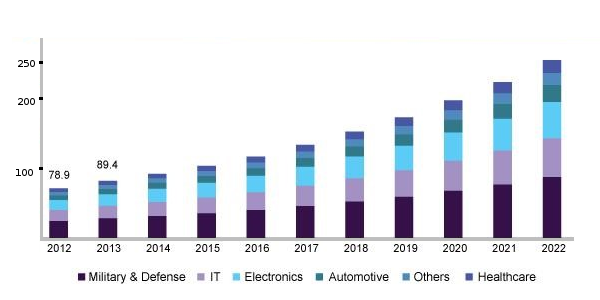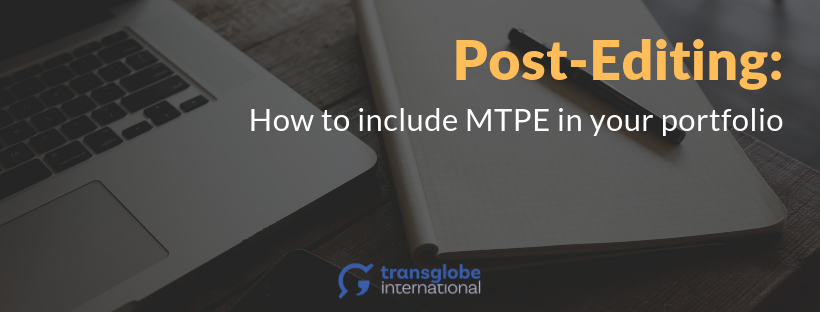Regardless whether you own a localization company or you’re working as a freelancer, the subject of Machine Translation is something we’ve been hearing about for quite some time. As a result, a new type of service emerged – Machine Translation Post-Editing, a.k.a. MTPE. Here we will explore the details necessary to successfully include this service in your portfolio.
Some basics
Machine Translation is the process of parsing a text through a specialized software engine in order to get a translated version of that text. This is done with minimal human interaction, usually comprising of only a few steps like importing the files, adjusting settings, starting the process, and saving the translated files. On the other hand, Post-Editing is the process of editing an already machine-translated content to improve its quality to an agreed level. Depending on the client’s requirements MTPE can also be followed by a regular revision stage.
So the first thing to understand is that post-editing is a key part of the machine translation process. MT gives a very raw output that is in most cases unsuitable for any serious use, and thus requires some human input in order to produce a readable and understandable text.
No drama
We’ve all heard it – the machines will take our jobs and then take over the world. Believing this is a convenient way to stay anxious all the time and will inevitably put a stop to your development. MT isn’t the future – it’s the present, and it has been going stronger and stronger – see graph below. It’s time to embrace this new technology and see how it can help you grow. So let’s see…

U.S. machine translation market size, by industry, 2012 – 2022 (USD Million).
Source: www.grandviewresearch.com
Machine Translation isn’t a cure-all
Imagine all your years of translation experience going down the drain overnight with the release of the new Mega-Neural-Psycho-Bot MT Engine. It’s bad. Very bad. It’s also very, very unlikely.
Machine translation engines are generally better with short and simple sentences. Such are technical instruction manuals or getting the gist of what your overseas friend posted on your FB wall. Any types of text that don’t require much creativity are good candidates for MT. And this is quite expected – computers are better than people in repetitive tasks, while humans are superior in their creative skills. This is why it’s hard to imagine machine-translating marketing texts or advertisements, proverbs, puns, etc. Creativity is an intrinsic human quality.
Language matters
We all have laughed at Google Translate’s poor translation attempts. But I’m also sure we all have seen the occasional spark of adequacy, the rare “perfect” translation of a long-ish and not very simple sentence presented proudly by Google Translate.
Truth is, not all languages are treated equally by MT engines. Depending on grammar or inflection rules some language pairs produce noticeably better results than others. Translations from English into German, Spanish, French and Italian are usually quite acceptable and about 25-30% quicker, while most Slavic languages, Hungarian, Finnish and a few others require a full human translation.
Machine Translation Post-editing ≠ Editing
Okay, so you’ve done your research and finally decided to include machine translaiton post-editing in your service offering. For a minute a modern MT engine can translate more than what the fastest translator can in year. We can take advantage of this speed while ensuring the final output is still accurate and readable by following these tips:
- Forget about beauty – MTPE is all about efficacy!
- Scan the source, read the target once. Seems ok? Move on!
- Spelling, grammar and punctuation errors should only be fixed if spotted. Don’t go looking!
- Are changes needed? If you can’t figure it out in 2 seconds, translate from scratch!
- Don’t bother about consistency – touch the screen and tap the screen mean the same, let it go!
- Focus only on mistranslations, omissions / additions, numbers, etc.
The tips above apply for the so called light post-editing. Any additional quality requirements will require a bit more attention to detail, sacrificing some speed (and adding cost!) in the process.
Practice is key
After knowing the theory, what is left is simply to start doing it. Keep challenging yourself, practice hard and aim for at least 3-5 times your daily translation productivity. It gets much more efficient in time. Once you feel ready, update your portfolio, and let your clients and collaborators know. Good luck!
If you would like some expert advice on machine translation post-editing or are interested in other of our translation services, write to us at hello@transglobeinternational.com.

